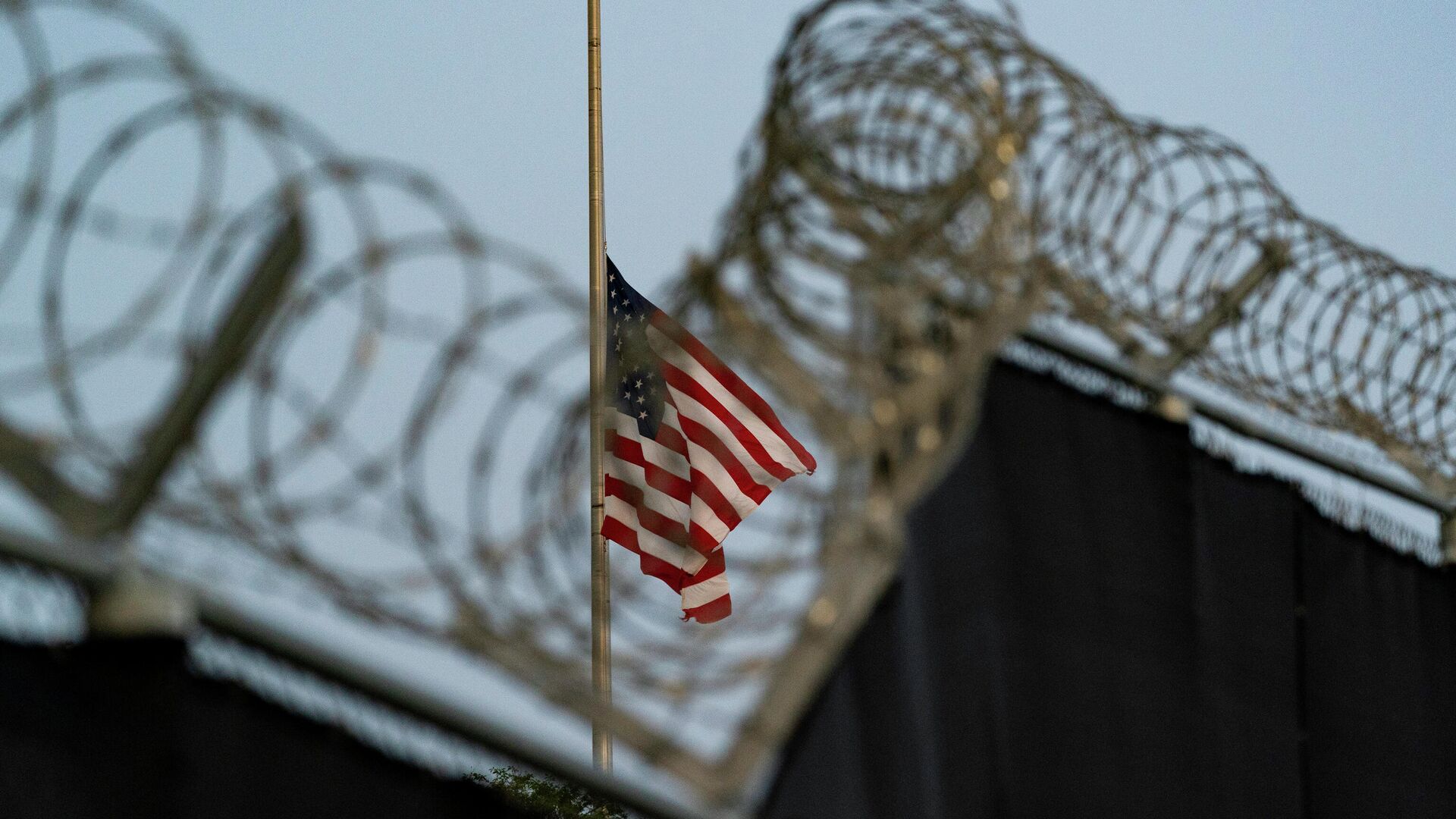https://sputnikglobe.com/20220112/biden-administration-clears-five-guantanamo-bay-detainees-for-transfer--1092192225.html
Biden Administration Clears Five Guantanamo Bay Detainees for Transfer
Biden Administration Clears Five Guantanamo Bay Detainees for Transfer
Sputnik International
The US government has granted the transfer of five detainees from the military base at Guantanamo Bay, Cuba. The facility turned 20 years old on Tuesday, and still houses 39 detainees, with 21 yet to be cleared for transfer.
2022-01-12T03:47+0000
2022-01-12T03:47+0000
2022-01-12T03:47+0000
guantanamo bay
war on terror
biden administration
https://cdn1.img.sputnikglobe.com/img/07e6/01/06/1092074841_0:94:3073:1822_1920x0_80_0_0_0a8bb737f64abd3f93a353458e7d8e8e.jpg
The Biden administration has stated its goal of closing the prison permanently. However, the process of releasing and then transferring prisoners is complicated and fraught with potential pitfalls.The Periodic Review Board is tasked with determining which detainees are cleared for release and transfer. The panel consists of representatives from different US national security agencies.The prisoners' crimes, alleged crimes, and behavior, are all taken into account before a release is granted. Before a prisoner can be transferred, the US must negotiate with their home nation’s government, or a third party, to allow their release.Guled Hassan Duran, Moath al-Alwi, Suhail al-Sharabi, Zakaria al-Baidany and Abdulmalik Bajabu have been identified as the five detainees approved for transfer. None of the men have been charged with a crime.Duran was deemed a crucial member of East Africa al-Qaeda*. He was captured in 2003 in Djibouti, reportedly in the alleged final stages of plans to carry out terrorist activities in the region. He is a Somali national.According to his attorney, and documented in a Senate Intelligence Committee report released in 2014, Duran was tortured at CIA black sites.Duran’s clearance for transfer was granted on November 10 but does not contain the rationale for the decision.Zakaria al-Baidany, who was also tortured at CIA black sites, was granted clearance on December 27.Moath al-Alwi, was granted his release by the review board at an unspecified time. The board noted his “lack of a leadership position in al-Qaeda or the Taliban*” and factored in his “highly compliant behavior” as reasons for his release.Abdulmalik Bajabu, accused of having ties to East Africa al-Qaeda, was arrested by Kenyan authorities in 2007. He was one of the five final detainees to arrive in the military prison.The final of the five detainees granted their release, Suhail al-Sharabi, was accused of serving as a bodyguard to Osama bin Laden. The Yemeni has also been accused of belonging to al-Qaeda.Al-Sharabi has been at Guantanamo Bay for close to two decades. The panel did not reveal their rationale for approving his transfer.At its height, the military prison at Guantanamo Bay housed hundreds of male prisoners. Now, under 40 detainees are housed in the facility. With the US war in Afghanistan officially over, Guantanamo Bay remains a final reminder of America’s costly War on Terror.* Terrorist organisations outlawed in Russia and many other states
Sputnik International
feedback@sputniknews.com
+74956456601
MIA „Rossiya Segodnya“
2022
News
en_EN
Sputnik International
feedback@sputniknews.com
+74956456601
MIA „Rossiya Segodnya“
Sputnik International
feedback@sputniknews.com
+74956456601
MIA „Rossiya Segodnya“
biden administration, guantanamo bay, detainees, transfer
biden administration, guantanamo bay, detainees, transfer
Biden Administration Clears Five Guantanamo Bay Detainees for Transfer
The US government has granted the transfer of five detainees from the military base at Guantanamo Bay, Cuba. The facility turned 20 years old on Tuesday, and still houses 39 detainees, with 21 yet to be cleared for transfer.
The Biden administration has stated its goal of closing the prison permanently. However, the process of releasing and then transferring prisoners is complicated and fraught with potential pitfalls.
The Periodic Review Board is tasked with determining which detainees are cleared for release and transfer. The panel consists of representatives from different US national security agencies.
The prisoners' crimes, alleged crimes, and behavior, are all taken into account before a release is granted. Before a prisoner can be transferred, the US must negotiate with their home nation’s government, or a third party, to allow their release.
Guled Hassan Duran, Moath al-Alwi, Suhail al-Sharabi, Zakaria al-Baidany and Abdulmalik Bajabu have been identified as the five detainees approved for transfer. None of the men have been charged with a crime.
Duran was deemed a crucial member of East Africa al-Qaeda*. He was captured in 2003 in Djibouti, reportedly in the alleged final stages of plans to carry out terrorist activities in the region. He is a Somali national.
According to his attorney, and documented in a Senate Intelligence Committee report released in 2014, Duran was tortured at CIA black sites.
Duran’s clearance for transfer was granted on November 10 but does not contain the rationale for the decision.
Zakaria al-Baidany, who was also tortured at CIA black sites, was granted clearance on December 27.
According to the review board, “There is no information indicating that the detainee engaged in activities against the United States prior to detention.”
Moath al-Alwi, was granted his release by the review board at an unspecified time. The board noted his “lack of a leadership position in al-Qaeda or the Taliban*” and factored in his “highly compliant behavior” as reasons for his release.
Abdulmalik Bajabu, accused of having ties to East Africa al-Qaeda, was arrested by Kenyan authorities in 2007. He was one of the five final detainees to arrive in the military prison.
The Kenyan national was deemed to have a “low level of training and lack of leadership role in his pre-detention activities,” according to the panel.
The final of the five detainees granted their release, Suhail al-Sharabi, was accused of serving as a bodyguard to Osama bin Laden. The Yemeni has also been accused of belonging to al-Qaeda.
Al-Sharabi has been at Guantanamo Bay for close to two decades. The panel did not reveal their rationale for approving his transfer.
At its height, the military prison at Guantanamo Bay housed hundreds of male prisoners. Now, under 40 detainees are housed in the facility. With the US war in Afghanistan officially over, Guantanamo Bay remains a final reminder of America’s costly War on Terror.
* Terrorist organisations outlawed in Russia and many other states

